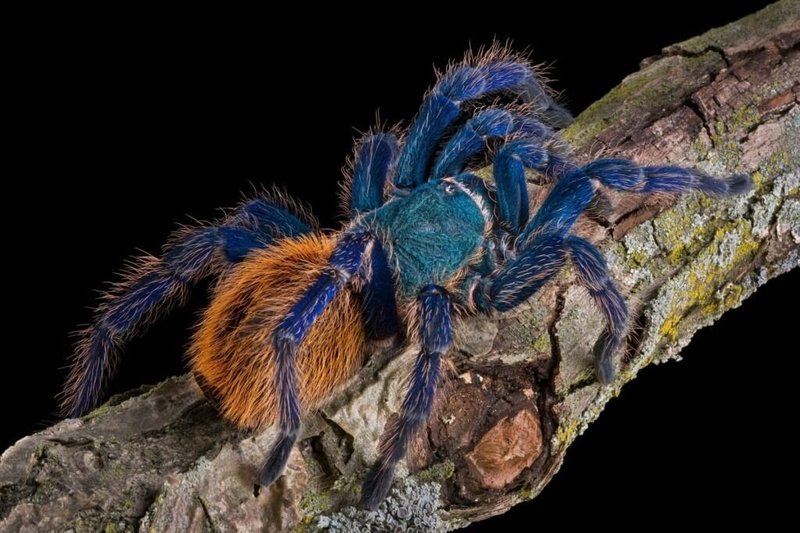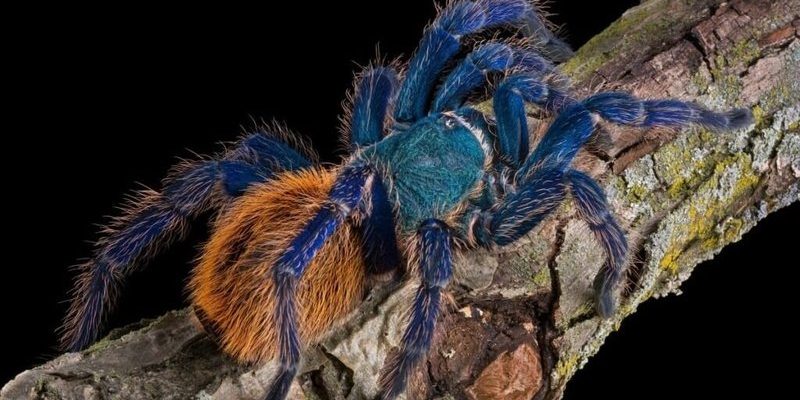
Greenbottle Blues, or *Ceratogyrus meridionalis*, are known for their stunning cobalt blue legs and striking green carapace. They’ve earned a reputation in the exotic pet world, but handling them isn’t as straightforward as just picking them up. Like many spiders, they have their quirks and defense mechanisms. With the right knowledge and care, you can enjoy the beauty of these fascinating creatures without risking injury.
Understanding the Greenbottle Blue Tarantula
The Greenbottle Blue Tarantula is native to the arid regions of Africa, specifically from Angola. They’re often described as both beautiful and bold, making them a popular choice for enthusiasts. Their bright blue coloration isn’t just for show; it serves a purpose in their natural habitat, helping them blend in with their surroundings. But don’t let their beauty fool you; these spiders can exhibit defensive behavior if startled.
You’ll find that these spiders prefer dry, warm environments. Mimicking their natural habitat is crucial for their well-being. If you decide to keep one, the enclosure should be well-ventilated and secure to prevent escapes. Soil that’s slightly damp will allow for burrowing, which is a behavior they enjoy.
Are They Safe to Handle?
When it comes to handling the Greenbottle Blue Tarantula, opinions vary widely. Some enthusiasts recommend it as a way to bond with your pet, while others argue that it can be quite stressful for the spider. Honestly, the key is understanding their behavior and recognizing the risks involved.
Here’s the thing: while they’re not typically aggressive, they can bite if provoked. Their venom isn’t considered dangerous to humans, but it can cause discomfort and irritation similar to a bee sting. So, if you’re not comfortable handling them, that’s perfectly okay! It’s essential to respect their space and let them come to you if they choose.
Best Practices for Handling
If you’re set on handling your Greenbottle Blue Tarantula, there are some steps to follow to make the process smoother and safer.
- Choose the Right Time: Handle your tarantula when it’s calm. Early mornings or late evenings can be ideal.
- Use a Container: Instead of trying to scoop them up with your hands, use a small container or cup to guide them in. This minimizes stress for both you and the spider.
- Stay Low: Always handle them close to their enclosure or a soft surface. Tarantulas can jump, and you don’t want a fall to harm either of you.
- Calm Movements: Sudden movements can trigger their defensive instincts. Move slowly and gently, and speak softly.
By following these practices, you can reduce stress and ensure both you and your Greenbottle Blue have a positive experience.
Signs of Stress in Tarantulas
Recognizing signs of stress in your Greenbottle Blue Tarantula is crucial. Just like us, they communicate through body language, although it can be subtle. Here are a few signs to watch for:
- Threat Posture: If your tarantula raises its front legs and appears to be ready to defend itself, it’s best to back off.
- Hiding: If your spider retreats into its burrow or hides behind decor, it’s a sign they want their space.
- Bolting: Rapid movement across the enclosure can indicate panic. Give them time to settle down.
Being mindful of these signs will help you build trust and ensure your tarantula feels safe.
What to Avoid When Handling
While handling can be a rewarding experience, there are definitely some things you want to steer clear of. Here are a few actions that can lead to trouble:
- Overhandling: Limit the time you spend handling your tarantula. Frequent handling can lead to stress and aggression.
- Ignoring Body Language: If you notice signs of distress, stop handling immediately—don’t wait for them to bite.
- Forcing Interaction: Never force your tarantula to interact if they’re not interested; it’s all about mutual respect.
By avoiding these common pitfalls, you’ll help create a safe and healthy environment for both you and your spider.
Alternatives to Handling
If you decide handling isn’t the right choice for you, don’t worry; there are plenty of ways to enjoy your Greenbottle Blue Tarantula without direct contact. Here are some ideas:
- Observation: Spend time watching their natural behaviors. Tarantulas can be surprisingly entertaining to observe.
- Feeding Time: Observe them during feeding. This is often when their hunting instincts shine, and it can be quite fascinating.
- Creating a Beautiful Habitat: Focus on enhancing their enclosure with plants, rocks, and hiding spots. It’ll give you a beautiful and dynamic display.
These activities can deepen your connection and appreciation without the risks that come with handling.
In the end, the decision to handle your Greenbottle Blue Tarantula comes down to your comfort level and understanding of their needs. Remember that while they are stunning and can be interactive, they’re still wild animals at heart. By practicing safe handling techniques and observing their behavior, you can forge a bond that’s rewarding for both you and your eight-legged friend. Above all, the key is respect—respect for their space, their nature, and their well-being. Enjoy your journey into the fascinating world of tarantulas, and be sure to prioritize their safety and comfort as much as your own!

